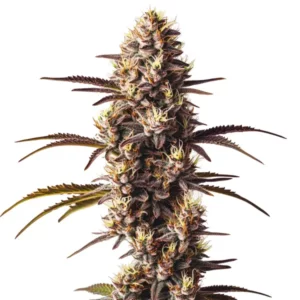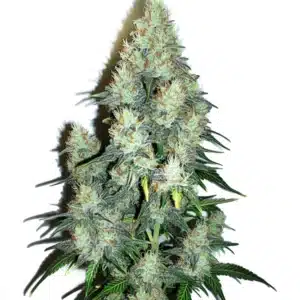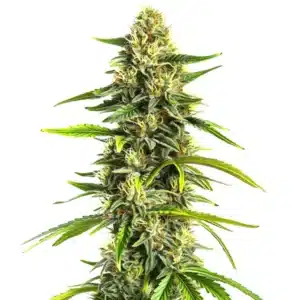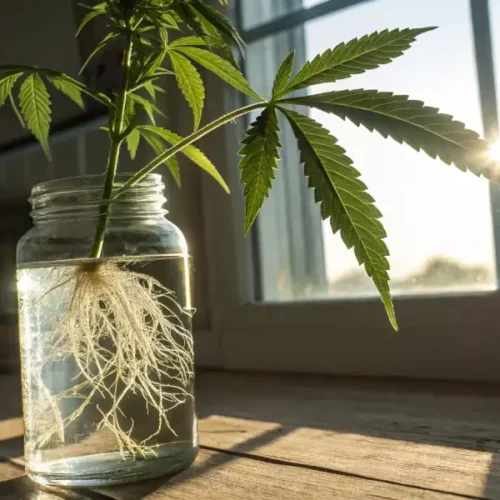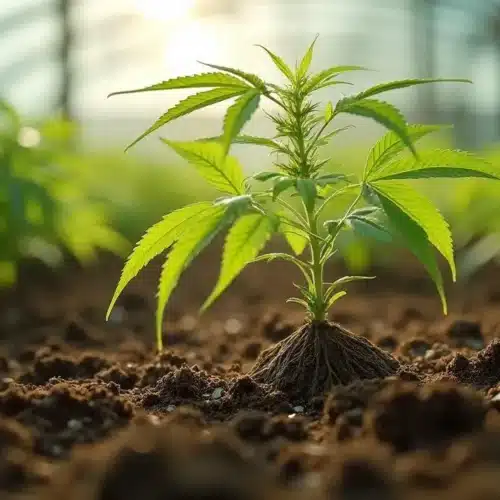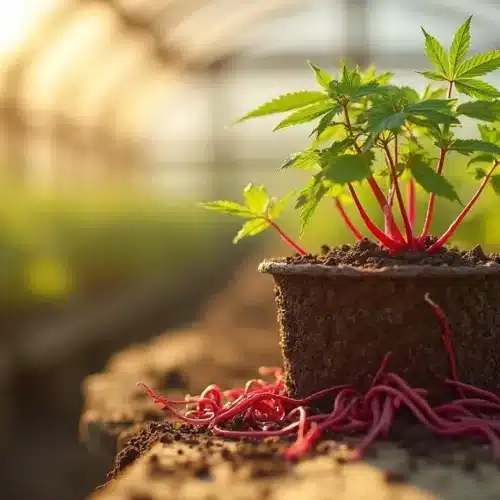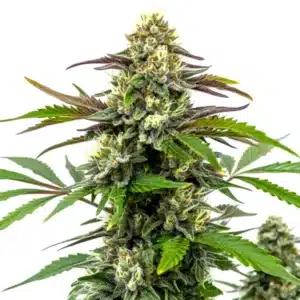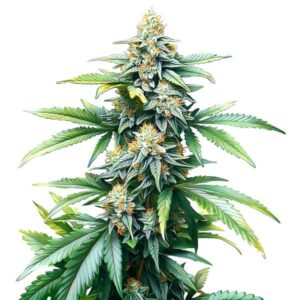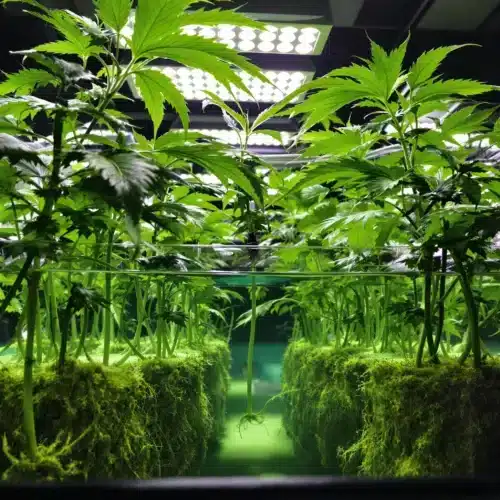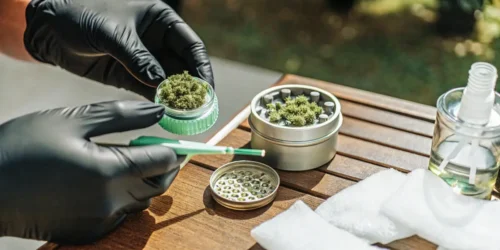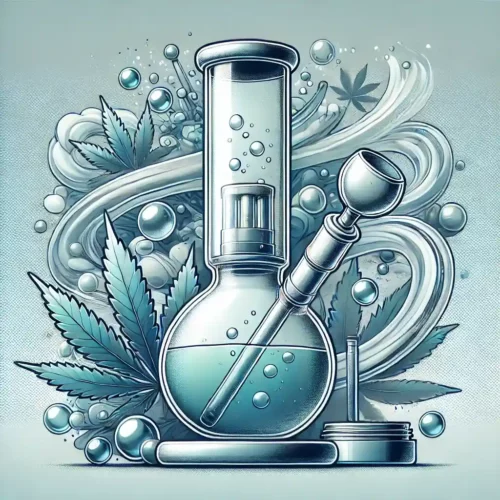How to Clean a Grow Room After Powdery Mildew
Why It’s Important to Clean After Powdery Mildew
How to clean a grow room after powdery mildew? Preventing future mildew or mold outbreaks starts with a thorough cleaning. Powdery mildew spreads easily through spores, which can linger on surfaces and in the air. By completely removing these spores, you stop the cycle and protect your future plants.
Cleaning also protects new plants from contamination. Even a small amount of mildew can compromise an entire crop. Properly sanitizing your grow room ensures a fresh, healthy environment for your next cultivation cycle.
Maintaining a healthy growing environment boosts plant health and yield. Powdery mildew not only affects plant aesthetics but also reduces potency and overall productivity. A clean grow room helps your plants reach their full potential.
Identifying Areas Affected by Powdery Mildew
Inspecting plants and surfaces for mildew traces is the first step. Powdery mildew appears as white, powdery spots on leaves, stems, or even walls. Check all visible areas carefully, as spores can spread far from the original infection site.
Don’t forget to check ventilation systems for hidden contamination. Fans, ducts, and filters are common hiding spots for spores. Neglecting these areas could reintroduce mildew into your grow room even after cleaning.
Assessing tools and equipment for spores ensures that every potential contamination source is addressed. Clean and disinfect everything from pruning shears to watering cans, as these can easily carry spores.
Immediate Steps to Contain Powdery Mildew
Removing infected plants and materials is critical to stop mildew from spreading. Seal infected plants in plastic bags and dispose of them far from your grow area. Avoid shaking plants, as this can release spores into the air.
Isolating the grow room prevents further contamination. Close off the space and turn off fans to reduce air circulation. This containment step is essential to control the spread of spores.
Using protective gear to handle mildew-contaminated items protects you and your clean environment. Wear gloves, masks, and disposable coveralls to prevent spores from clinging to your clothes or skin.
Promos & Deals
Tools and Supplies Needed for Cleaning Powdery Mildew
Effective Cleaning Agents for Powdery Mildew
Hydrogen peroxide and water solutions are excellent for disinfecting surfaces. Mix one part hydrogen peroxide with three parts water to create a safe, effective cleaner that kills mildew spores.
Vinegar is another natural disinfectant that works well against powdery mildew. Its acidity breaks down spores and prevents regrowth. Use a diluted solution to avoid damaging sensitive surfaces.
Commercial fungicidal sprays offer a targeted approach to mildew removal. These sprays are designed specifically to kill and prevent fungal growth. Choose a product labeled safe for grow rooms to avoid harmful residues.
Essential Cleaning Tools for a Thorough Job
Soft brushes are ideal for scrubbing mildew off walls, corners, and seams. These tools help you reach hidden spots without damaging surfaces.
Microfiber cloths are perfect for wiping down reflective walls, equipment, and grow lights. They trap spores and dust, leaving surfaces clean and shiny.
HEPA filters and vacuums are crucial for removing airborne spores. Use them to clean ventilation systems and floors, ensuring that no spores remain in the air.
Safety Gear for Handling Powdery Mildew
Gloves and masks are essential for avoiding direct contact with spores. Choose disposable options to prevent recontamination.
Goggles protect your eyes from airborne spores and cleaning agents. This is especially important when scrubbing surfaces or using sprays.
Disposable coveralls keep your clothes free from spores, reducing the risk of spreading mildew to other areas. Use a new pair for each cleaning session to maintain hygiene.
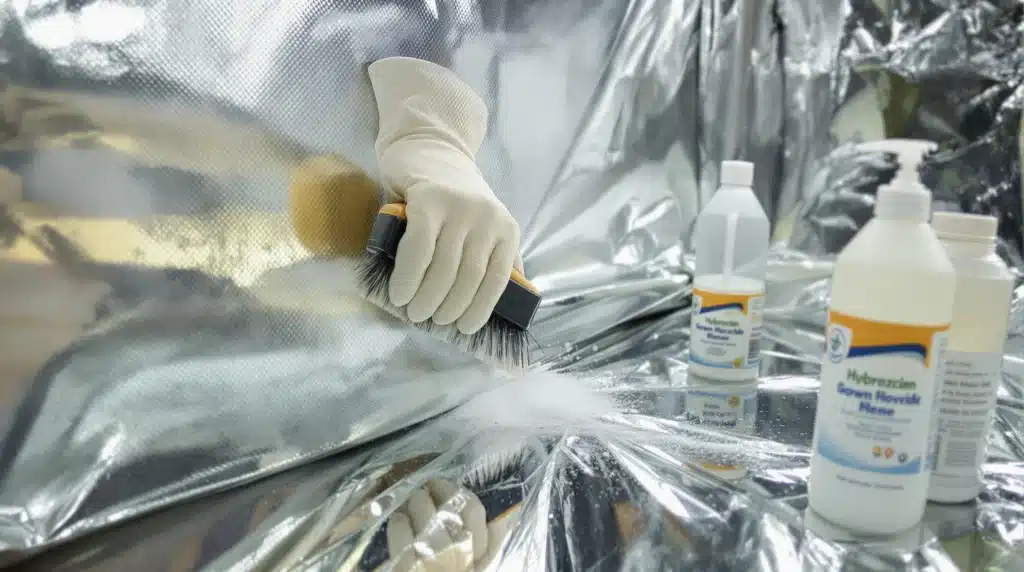
Step-by-Step Guide to Cleaning Your Grow Room
Removing Infected Plants and Materials
Disposing of infected plants properly is the first step. Place plants and any heavily contaminated materials in sealed plastic bags. Dispose of them in an outdoor trash bin far from your grow area.
Clean pots, trays, and grow mediums thoroughly. Use a hydrogen peroxide solution or commercial disinfectant to sanitize these items. Let them dry completely before reintroducing them to the grow room.
Sterilizing tools and accessories used on affected plants prevents recontamination. Submerge tools in a disinfectant solution and scrub them with a brush to remove all traces of mildew.
Deep Cleaning the Grow Room Surfaces
Washing walls, floors, and ceilings with disinfectants ensures a thorough clean. Use a microfiber cloth or sponge to apply the solution evenly and remove all mildew traces.
Scrubbing and sanitizing corners and seams is vital, as spores often hide in hard-to-reach areas. Pay extra attention to these spots, using a soft brush to dislodge mildew.
Addressing reflective surfaces and grow lights improves efficiency. Mildew can reduce light reflection, impacting plant growth. Clean these surfaces gently to restore their effectiveness.
Sanitizing the Ventilation System
Cleaning fans, ducts, and filters removes spores trapped in your ventilation system. Disassemble components and wipe them down with a disinfectant solution. Replace filters with new HEPA options for maximum efficiency.
Replacing old filters ensures your system runs cleanly. Old filters can harbor spores even after cleaning. Invest in high-quality replacements to maintain proper airflow.
Ensuring proper airflow after cleaning involves reassembling the system and testing it. Turn on fans and monitors to confirm everything is functioning correctly.
Preventing Powdery Mildew After Cleaning
Maintaining Ideal Humidity and Temperature Levels
Monitoring grow room conditions with sensors helps you maintain a mildew-free environment. Keep humidity levels below 60% and ensure temperatures are within the optimal range for cannabis growth.
Using dehumidifiers to keep moisture under control is effective in preventing mildew. These devices remove excess humidity, creating an environment that discourages fungal growth.
Ensuring proper ventilation reduces stagnant air that fosters mildew. Keep fans running and vents clear to maintain a steady airflow.
Regular Cleaning and Maintenance Practices
Weekly wiping of surfaces and equipment keeps your grow room clean. Use a mild disinfectant to remove dust, spores, and residue.
Deep cleaning between grow cycles prepares your space for the next batch of plants. This includes sanitizing all surfaces, equipment, and ventilation systems.
Keeping a checklist to track maintenance tasks ensures consistency. Regular attention to cleanliness prevents mildew from gaining a foothold.
Choosing Powdery Mildew-Resistant Strains
Selecting cannabis strains with higher resistance to mildew can reduce the risk of outbreaks. Look for strains bred specifically for resilience against fungal infections.
Rotating crops avoids long-term mildew buildup in your grow room. Changing strains disrupts the environment mildew needs to thrive.
Keeping detailed records of strain performance helps you identify which varieties grow best in your conditions. Use this information to refine your cultivation practices and minimize mildew risks.
Advanced Steps to Ensure a Mildew-Free Grow Room
Advanced Cleaning Techniques for Grow Rooms
Using Fogging Machines for Comprehensive Disinfection
Fogging machines provide an efficient way to sanitize large grow rooms. These devices disperse a fine mist of disinfectant that reaches every corner, eliminating spores hidden in hard-to-reach areas. Use a plant-safe disinfectant solution specifically designed for grow spaces.
This method complements traditional cleaning by covering surfaces and airspaces alike. Fogging reduces the chances of missed spores and creates a sterile environment for your next cultivation cycle. How to clean a grow room after powdery mildew effectively includes using fogging machines to reach hidden areas.
Applying UV Sterilization for Added Protection
UV sterilization kills mildew spores by disrupting their DNA. Install UV lights in your grow room to sterilize surfaces and air as part of your cleaning routine. UV lamps are particularly effective for preventing spore regrowth after initial cleaning.
Use caution with UV lights, as direct exposure can harm plants and humans. Operate the lights when the room is empty to maximize safety and effectiveness. This is a key step in understanding how to clean a grow room after powdery mildew thoroughly.
Sterilizing Water Systems and Irrigation Lines
Mildew spores can thrive in stagnant water or residue within irrigation systems. Flush your water lines with a hydrogen peroxide solution to remove buildup and kill spores. Clean reservoirs and pumps thoroughly to maintain a sterile water supply.
Regular maintenance of water systems prevents spores from re-entering your grow environment. Incorporating this step into how to clean a grow room after powdery mildew ensures consistent results.
Choosing the Best Fungicides and Preventive Solutions
Organic Fungicides for Long-Term Mildew Management
Organic fungicides like neem oil or potassium bicarbonate offer a natural solution to managing mildew. These options are safe for plants and help prevent spore development without introducing harsh chemicals.
Apply these fungicides as part of your maintenance routine to keep mildew at bay. Regular treatments are essential when learning how to clean a grow room after powdery mildew and prevent its return.
Chemical Fungicides for Severe Mildew Infestations
For severe powdery mildew infestations, chemical fungicides can provide a quick and effective solution. Look for products labeled safe for indoor grow rooms and follow the manufacturer’s guidelines for application.
Use chemical fungicides sparingly to avoid residue buildup. Pair them with organic solutions for a balanced approach to mildew control. This method is critical in mastering how to clean a grow room after powdery mildew in extreme cases.
Anti-Mildew Coatings for Grow Room Surfaces
Anti-mildew coatings provide an extra layer of protection for your grow room. These products are applied to walls, floors, and ceilings to inhibit fungal growth. Choose coatings designed for agricultural use to ensure compatibility with your grow setup.
Reapply these coatings periodically to maintain their effectiveness. They are particularly beneficial in humid environments prone to mildew. Incorporating these into how to clean a grow room after powdery mildew ensures long-term results.
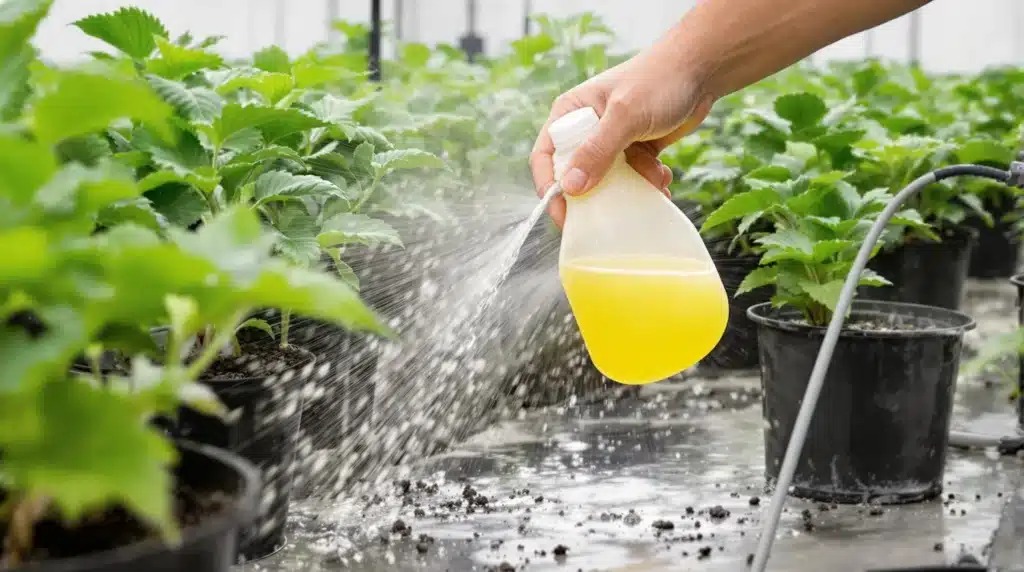
Integrating Preventive Measures into Your Grow Cycle
Rotating Crops and Growing Conditions
Rotating crops disrupts the mildew life cycle and prevents spores from adapting to a single strain. Alternate between mildew-resistant strains and monitor plant performance to identify ideal growing conditions.
Adjust environmental factors like humidity and temperature to discourage mildew. Lowering humidity levels and increasing airflow reduce the likelihood of mildew thriving in your grow room. These adjustments are vital to understanding how to clean a grow room after powdery mildew and keep it clean.
Implementing Quarantine Practices for New Plants
Introduce new plants into a quarantine area before placing them in your main grow room. This step prevents potential mildew contamination from spreading to your established crop.
Inspect new plants thoroughly for signs of mildew during quarantine. Treat them with preventive fungicides if necessary before transferring them to your main grow area. This practice strengthens how to clean a grow room after powdery mildew to avoid future contamination.
Scheduling Regular Deep Cleans
Set a schedule for deep cleaning sessions between each grow cycle. Include tasks like disinfecting all surfaces, sterilizing tools, and inspecting ventilation systems. Consistent maintenance minimizes the risk of mildew taking hold.
Tracking your cleaning schedule ensures no steps are missed. Detailed records help you refine your process and improve overall grow room hygiene. Regular deep cleans reinforce how to clean a grow room after powdery mildew for lasting success.
By combining these advanced techniques with diligent maintenance, you can maintain a grow room that stays mildew-free and produces high-quality cannabis crops.


